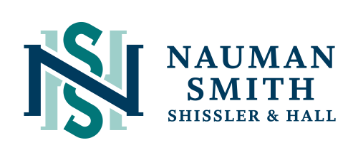The Extent of Event-Based Liability in the COVID-19 Era
Since the COVID-19 pandemic began, information on the disease and recommended precautions have changed constantly. While scientists originally believed that this strain of the disease was only spread through animals, intensive research since has shown that COVID-19 spreads through direct, indirect, or close contact with infected people or surfaces. People with the infection can transmit it through saliva, respiratory secretions, or secretion droplets. For instance, sneezing and talking can spread the virus. The droplets are capable of transmitting between individuals within one meter of each other or through nearby surfaces.
The recommended and state mandated precautions to prevent or slow the spread of COVID-19 have changed rapidly as well. Some countries forbade people from leaving their homes for a period of weeks, and in the United States, nonessential businesses were shut down before steadily reopening in recent months. Most states now have a mask mandate.
Nonessential businesses were forced to either go remote or suffer the financial losses of closures. Seven months into the pandemic, most are trying to recover. Keeping up with the safety protocols and understanding how liability for the transmission of COVID-19 might attach to workdays or events is critical for businesses to stay functioning, keep people safe, and avoid potentially hefty liability.
The Centers for Disease Control (CDC) is the leading health organization in the United States, and it has released extensive guidelines for minimizing risks associated with gatherings. For entities organizing gatherings or events, the CDC recommends the event remain small. It also recommends staying up-to-date on local guidelines, communicating thoroughly with guests about necessary precautions such as where to be at any given time, holding such events outdoors or in well-ventilated places, maintaining hygiene stations, placing distance markers for appropriate social distancing, and requiring masks. Furthermore, it suggests having a designated individual that everyone is informed is the point of contact for any COVID-19 related concerns.
According to the World Health Organization, COVID-19 most often causes mild symptoms. This is not a universal result, however, as approximately one in every five people who contracts COVID-19 subsequently needs to be hospitalized. The disease is also highly contagious, spreading around twice as easily as the flu. It is therefore safest for everyone if standard contact tracing measures are put in place. This is a practice supported by the Pennsylvania Department of Health as well. Since health professionals average that symptoms should appear in individuals within 5 to 14 days of coming into contact with the virus, any agreements signed by guests attending the event should include an agreement to notify the organizers of a positive test in the 14 days following said event. Contact tracing has been used extensively in the past, including recently during the Ebola outbreak that lasted from 2013 to 2016. It is a practice that is widely supported by health organizations around the world.
Under the Pennsylvania Department of Health, contact tracing involves interviewing people who have COVID-19 to identify the people they were in contact with when they may have been infectious, and notifying said individuals. These contacts are then referred for testing and monitored for any symptoms. The Department of Health maintains confidentiality during the process, encourages contacts to stay home, and connects contacts with any services that may be required while they are quarantined.
In regard to organizations and businesses taking measures to insulate themselves from liability, it is likely that new types of insurance need not be developed. Insurance policies often protect against “communicable diseases,” which include COVID-19. General liability insurance, workers compensation, employers’ liability insurance, and more are all normal measures to take to insulate from liability linked to someone contracting a communicable disease while involved in work or an event related to a business. While COVID-19 is new, extremely contagious, and the healthcare related to the disease is still in early stages, making it more dangerous than some other illnesses, it is still a communicable disease. It will remain to be seen, however, how general liability insurers react to such claims based on the language of applicable policies.
Waivers for event attendees should be as clear as possible on any additional protections that attendees are waiving related to COVID-19. Many waivers for events currently being used include a specific COVID-19 section providing safety information on necessary precautions, individuals who are recommended not to attend such events, and agreements to self-monitor prior to and following the event. Most explicitly, waivers have included an “assumption of the risk” that lists COVID-19 as a prominent current risk.
Many businesses rely on events to continue operating, including nonprofits that fundraise during such events to fulfill their mission statements. To allow for such organizations to function while keeping the public safe until there is either improved treatment for COVID-19, a vaccine, or both, the CDC and Pennsylvania Department of Health’s safety precautions are essential. Adding waivers and following reliable health protocols will allow for businesses and charities to continue functioning safely while insulating from liability.
With contribution from Angela Mauroni, second year J.D. candidate at the University of Pittsburgh School of Law.
